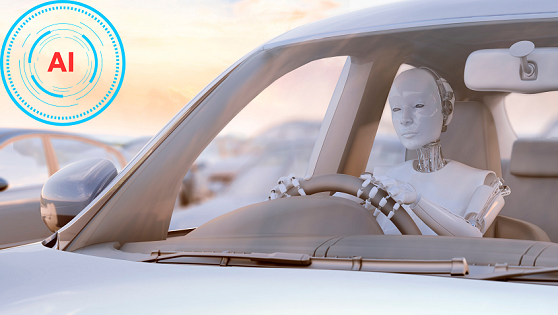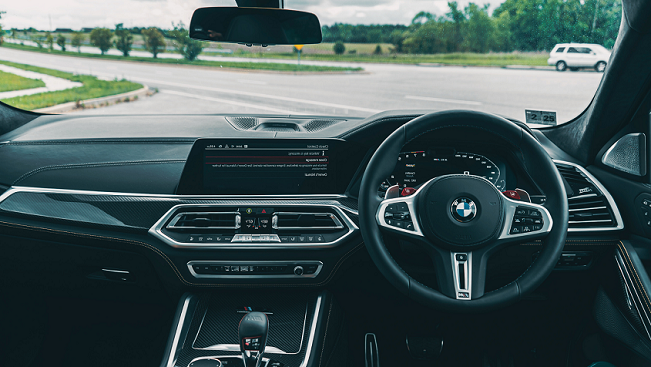
Automated driving in the automotive industry is progressing rapidly towards full autonomy and the game changing milestone is current Level 3 Automated Driving Systems. Conditional automation systems are these which allow the car to drive most of the tasks in driving but the human driver should have the control when suggested. Artificial Intelligence (AI) is key to making these systems safer, more efficient and more reliable. In this post, we’ll take a look at how AI enhances Level 3 automated driving, which of the components are most crucial to its implementation, and what the future of transportation might look like.
What is Level 3 Automated Driving?
Levels 0 through 5 of automation are defined by the Society of Automotive Engineers (SAE). Auto driving conditional on vehicle state and environment occurs in Level 3, where the vehicle can perform all driving (steering, acceleration braking), but only under certain conditions (highway driving). But the driver must be in the car, alert and prepared to take back controls if asked to by the system.
Key features of Level 3 automation:
- Automatic Lane Keeping: Under certain conditions, the vehicle can steer, accelerate and brake autonomously.
- Environment Perception: It monitors surroundings using the cameras, LiDAR, radar and ultrasonic sensors.
- Driver Monitoring: AI systems confirm the driver is currently paying attention and ready to hand control over to the AI at any moment.
The technology is promising but it’s the AI that powers the continued improvements in safety, smarts and efficiency of Level 3 driving systems. We’ll explore how we’re making this new frontier of autonomous driving using AI.
AI in Level 3 Autonomous Driving Systems
1. AI for Enhanced Environmental Perception
Perceiving and understanding the environment is one of the two most challenging aspects of autonomous driving. Conversely, vehicles have to perceive, recognize, and react to obstacles, pedestrians, other vehicles, signs and other entities in real time. Where AI driven perception systems come into play is in this.
Machine learning algorithms of AI are then used to analyse the data from multiple disparate sensors, typically LiDAR, cameras, radar, ultrasonic sensors and others, to make decisions. For example, if AI can distinguish the traffic signs being displayed, recognise the pedestrians crossing the street, or even know where the other vehicles are located, such that the car decides what to do accordingly.
AI technique sensor fusion combines data from multiple sensor types for a more accurate and robust understanding for the vehicle surrounding. This fusion is capable of addressing individual sensor limitations. For example, cameras are good for viewing road signs and lane markings, but they fail in driving in bad weather. In contrast, radar works well in rain and fog, and AI can combine these sources for preventing mishaps irrespective of the conditions.
2. Path Planning and Decision Making using AI
AI is then responsible for making these real time decisions about how the vehicle should behave after it has perceived its surroundings. Path planning and decision making is called this process.
The process of path planning is an AI driven method by which the vehicle can do the safest and most efficient path. The algorithms in AI also account for the rate and positioning of nearby vehicles, the road layout, the lights on roads, and all possible risks. It then chooses the-best possible path for the vehicle to drive along whilst being safe and legal.
For instance, suppose the AI sees another car will soon be merging into its lane, then it can change lane, slow down or keep a safe distance. Likewise, when along an intersection, AI will decide whether to pass, stay or stop, depending on traffic conditions and indications.
AI continuously learns from tons of data, and its decision making skills become better and better with time, faster and faster at handling complex driving situations.
3. AI and Driver Monitoring
While Level 3 vehicles can take care of most of the driving tasks, the human driver needs to be attuned, alert and ready to assume control when necessitated. These AI powered driver monitoring systems are essential in making sure the driver is paying attention, and ready to act if necessary.
Driver monitoring systems use AI based computer vision to see where a driver looks (gaze), head position and even facial expression. It helps identify whether the driver is focusing on the road or distracted, drowsy, or unresponsive. At the end of the day, if the AI identifies that the driver isn’t attentive, it can send warnings, offer feedback, or trigger corrective steps, like slowing down the car or stopping to a safe location.
As AI technology gets better, systems become more accurate and sophisticated, spotting the slightest signs that someone is distracted or tired.
4. Edge computing and real-Time data processing
The combination of sensors, cameras and other systems on level 3 autonomous vehicles generates huge amounts of data. This data must be processed quickly and accurately in order for the vehicle to make real time decisions. It’s all about AI and edge computing in this process.
Processing data on the vehicle’s onboard computers with edge is on the rise, this means no longer relying solely on cloud servers. To reduce latency and achieve real time decision making, this is crucial. These edge systems in vehicles can run AI algorithms fed from the sensors in the vehicle, allowing the vehicle to instantly react to changes in the surrounding environment.
5. Predictive Capabilities Driven by AI
Predicting future events is one of the most powerful applications of AI in Level 3 automated driving systems. AI anticipates potential hazards based on data from its own sensors and data from V2V or V2I communication to automatically change the vehicle’s behavior.
Say, an AI system can anticipate when a car ahead of it will likely brake rapidly and quickly anticipate system preparations to take evasive action. Similarly, if the vehicle senses that it is approaching a construction zone, it is able to adjust its speed or route around the conditions of the road.
Using historical data and current conditions AI can predict future events, providing Level 3 systems with the ability to operate more safely and efficiently and minimizing the likelihood of accidents or traffic disruptions.
6. Smart Infrastructure Integration
Beyond the vehicle, AI is playing a role in Level 3 automation. Connected traffic lights, smart road signs and embedded sensors in the road can communicate with the vehicle, to optimize traffic flow and further safety.
For instance, AI can instruct traffic lights to advise the vehicle which speed it should go at so that it hits green lights and makes limited stops, saving more fuel and eliminating congestion. Just as AI can share data with other vehicles on the road to determine when it’s time for them to merge lanes or avoid an accident, for example.
This level of integration will make transportation more intelligent with a better driving experience.
Future of AI in Level 3 Automation and Challenges
Despite the significant advances in AI for Level 3 automated driving, there are still challenges to address:
- Sensor Limitations: A lot of these AI systems depend on sensors, which can sometimes have problems due to weather, lighting conditions or otherwise fail. However, these can be mitigated with the help of AI driven sensor fusion, which is far from perfected.
- Driver Trust and Transitioning Control: A critical challenge is to make sure that driver is able to comfortably change from a passive passenger to active driver if requested. Warnings, by which we mean alerts and notices, are always necessary in any AI system to help driver awareness and attention.
- Ethical and Legal Issues: In unavoidable accident scenarios, AI driven vehicles will be confronted by ethical dilemmas. The regulatory frameworks for AI driven vehicles have not yet been established on a global scale.
Level 3 Automation: The Road Ahead
Level 3 automated driving systems are going to be increasingly sophisticated in perception, decision making, and driver monitoring as AI marches on. As in Level 5, complete autonomy (when vehicles can operate without human intervention) is on the horizon but Level 3 will still be a critical step between us and Level 5.
Through the integration of AI with smart infrastructure and vehicle-to-vehicle communication, safety, efficiency, and convenience will be enhanced. Over time, AI algorithms will keep learning and getting better at making decisions, and we are drawing nearer to the time when autonomous driving will not be a big deal!
Conclusion
The cornerstone of Level 3 automated driving systems is AI — AI that helps these vehicles navigate complex environments, make real time decisions and be safe. Level 3 systems are relying on AI to process environment perception, path planning, driver monitoring and predictive capabilities to ensure the safety and reliability of a seemingly straight and simple road.
The challenges exist, but AIs will continue to develop, and as such, they will make more safe and efficient autonomous vehicles, and more autonomous transport. With AI leading the way to the future of mobility, it’s essential to know how AI is shaping up Level 3 automation to realize the full extent of autonomous driving.


